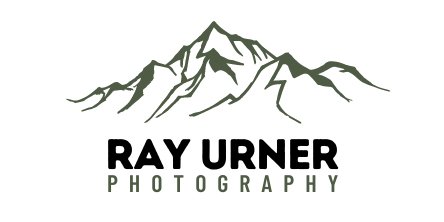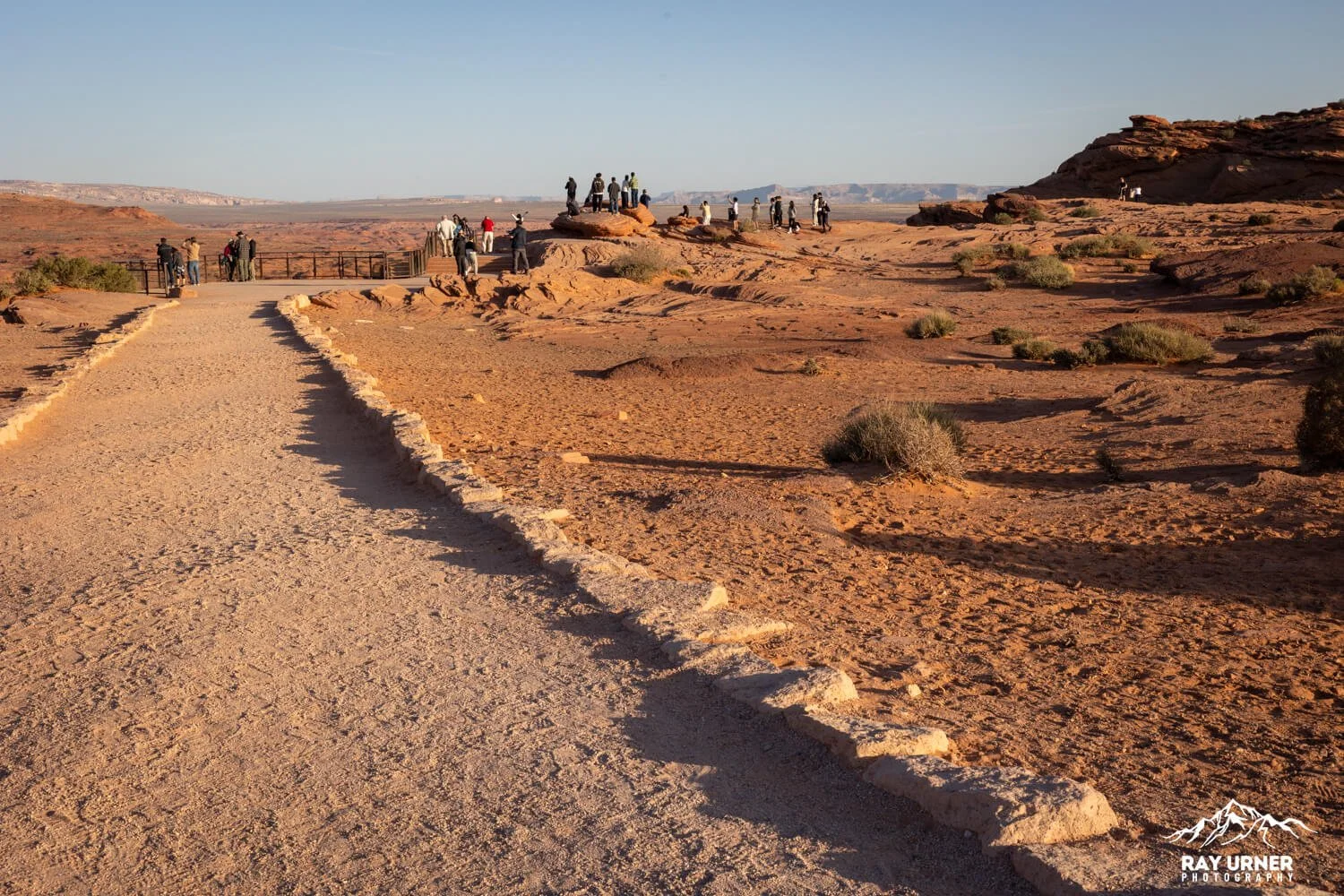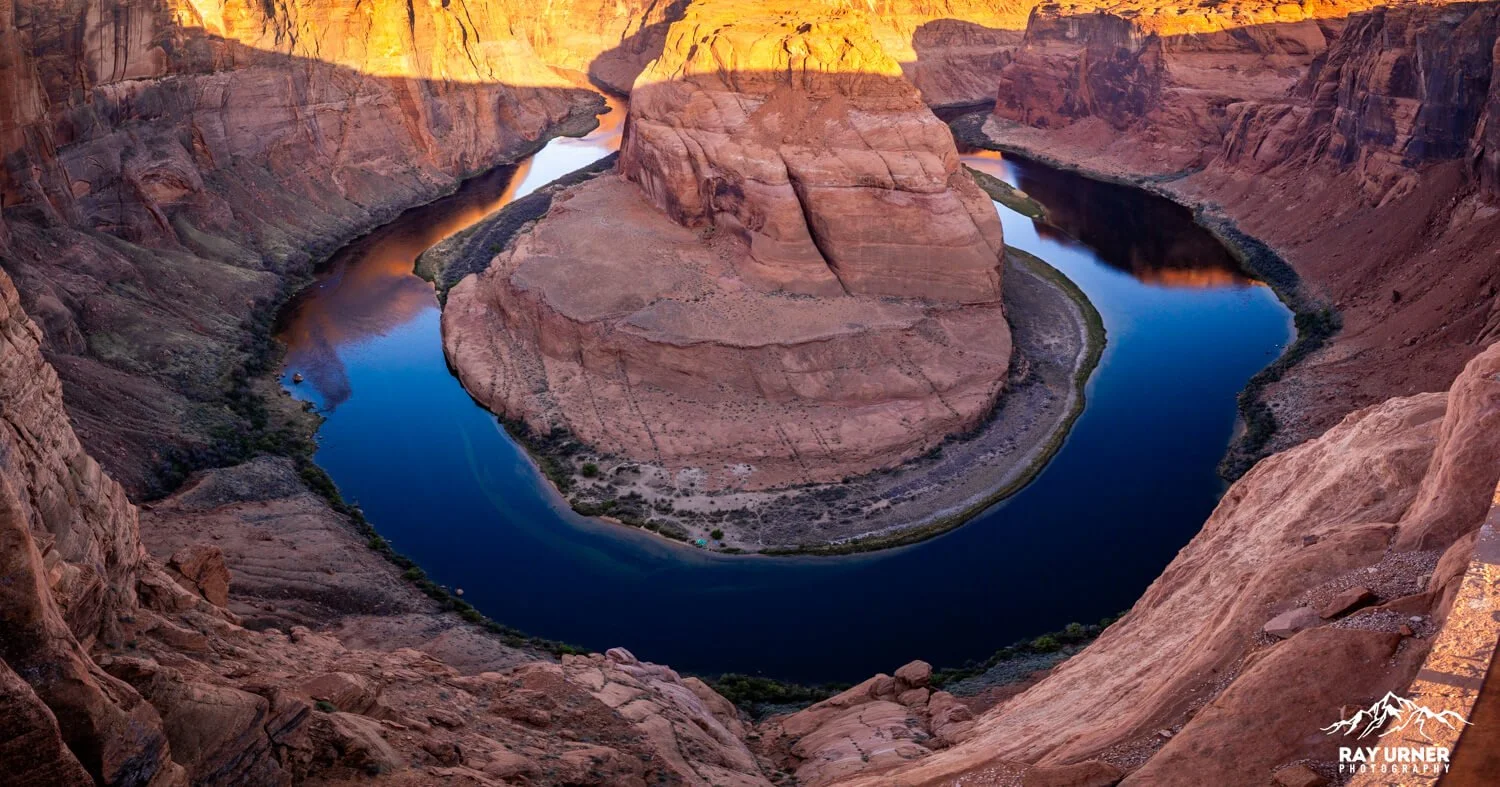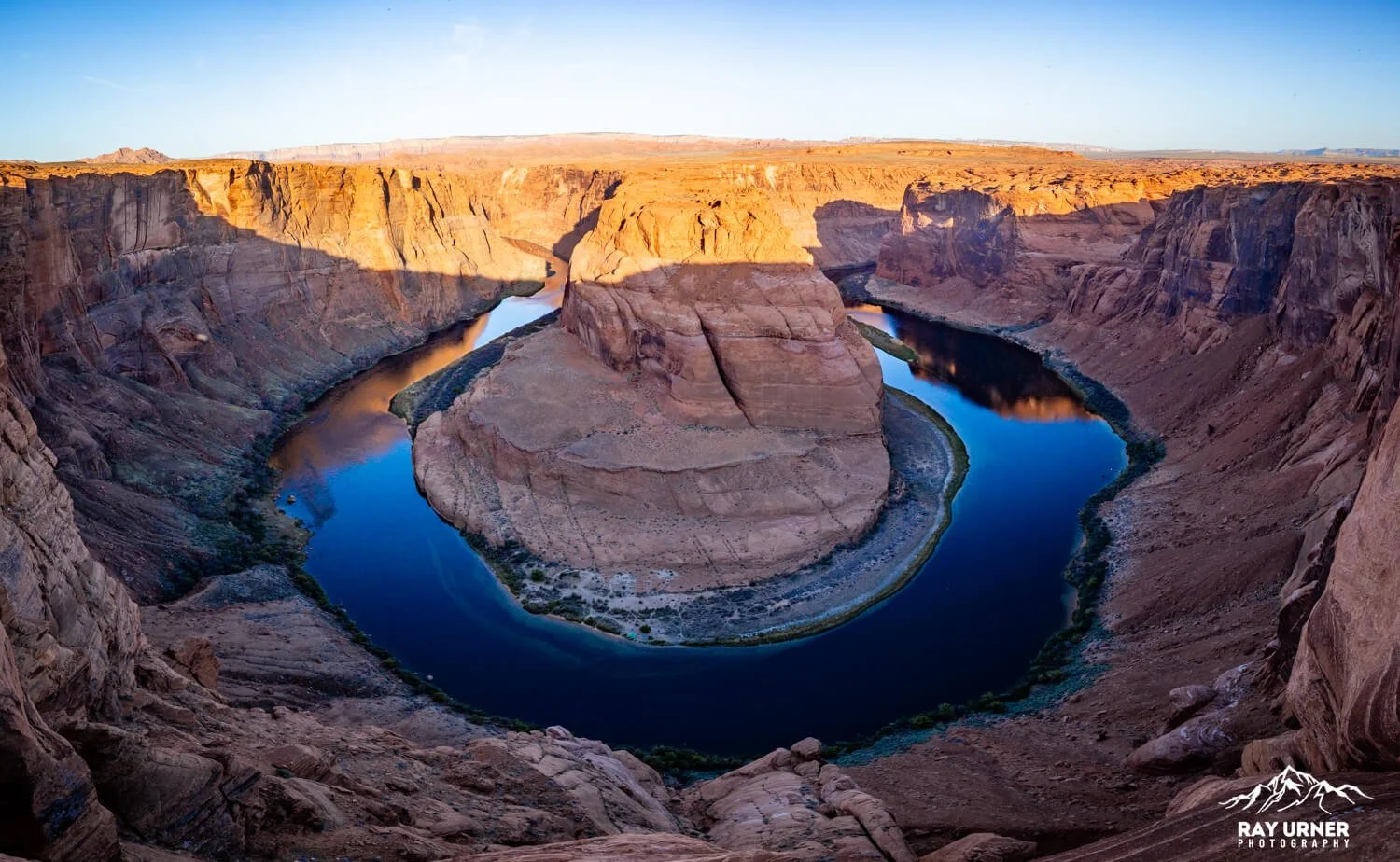Horseshoe Bend
Just outside the desert town of Page, Arizona, the Colorado River performs a dramatic U-turn, carving a near-perfect horseshoe into the red Navajo sandstone. This geological marvel—aptly named Horseshoe Bend—has become a bucket-list destination for photographers worldwide. Whether you're chasing the golden glow of sunrise or the fiery hues of sunset, this guide will help you make the most of your visit.
Getting There: Parking, Hours & Trail Info
Location: Just off U.S. Highway 89, about 5 miles south of Page, AZ.
Parking Fee: $10 per passenger vehicle (cash or card; holiday periods may require cash only)
Hours: Open sunrise to sunset, 365 days a year.
Trail: A 1.5-mile round-trip hike over a hardened, partially paved path. Rated moderately difficult due to heat and exposure. (I did it in early April, and the only hard part was dodging masses of people)
Accessibility: Wheelchair and stroller accessible with assistance. Two shaded rest stops are available, but the overlook itself is fully exposed.
Pets: Allowed on leash. Bring water for them—desert heat is no joke.
Pro Tip: Avoid parking along Highway 89—it’s illegal and strictly enforced.
Photographing Horseshoe Bend at Sunrise
Why Go Early?
Fewer crowds.
Cooler temperatures.
Soft, pastel lighting ideal for long exposures.
Best Angles:
Position yourself slightly to the left of the main viewing platform to capture the river’s full curve with the rising sun illuminating the canyon walls.
Use a wide-angle lens (14–24mm) to encompass the entire bend.
A graduated ND filter helps balance the brightening sky with the darker canyon.
Creative Tip: Try a vertical composition to emphasize the depth of the 1,000-foot drop.
Photographing Horseshoe Bend at Sunset
Why Go Late?
The sun sets directly behind the bend in summer, creating dramatic silhouettes and golden reflections.
Rich, warm tones enhance the red rock textures.
Best Angles:
Arrive at least an hour before sunset to claim a good spot.
Use a tripod for stability as light fades.
Bracket your exposures for HDR blending—shadows in the canyon can be intense.
Try to capture an epic sun star!
Safety Note: There are railings at the main overlook, but much of the rim is unprotected. Watch your footing, especially when setting up gear. And try not to get vertigo!
Geology: Sculpted by Time
Horseshoe Bend is part of the Glen Canyon National Recreation Area, and its iconic shape was carved over millions of years by the relentless flow of the Colorado River. The surrounding rock is Navajo Sandstone, formed from ancient desert dunes over 190 million years ago. The river’s meander is a textbook example of an entrenched meander, where uplifted land forces a river to cut deeply into its bed. (Damn, there’s a term I haven’t used since high school geology)
History: From Hidden Gem to Global Icon
Once a quiet viewpoint known mostly to locals, Horseshoe Bend exploded in popularity with the rise of Instagram. Today, it draws over 2 million visitors annually. Despite its fame, it remains a sacred and awe-inspiring place—part of the ancestral lands of the Navajo Nation and a symbol of the American Southwest’s raw beauty.
Final Tips for Photographers
Bring water, sunscreen, and a hat. There’s no shade at the overlook.
Use a polarizer to reduce glare on the water.
Respect the land. Stay on trails and pack out all trash.
Be patient. Wait for the light to change—it’s worth it.
Whether you're a seasoned landscape photographer or a traveler with a smartphone, Horseshoe Bend offers a canvas of light, shadow, and scale that’s hard to match.
Back to National Parks Main Page
































